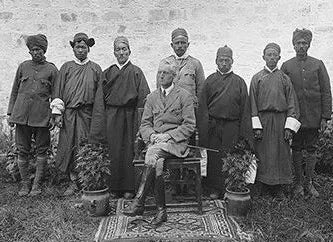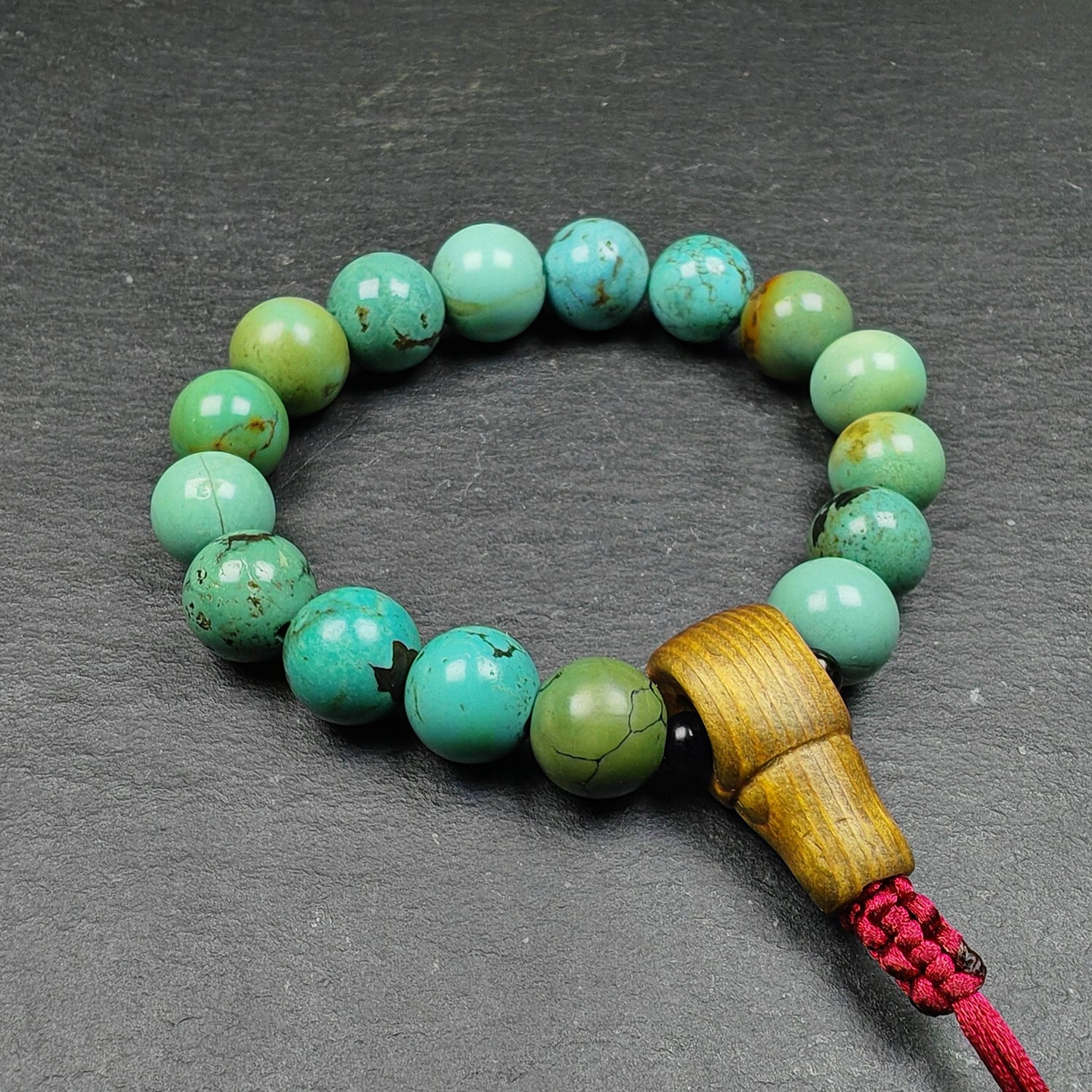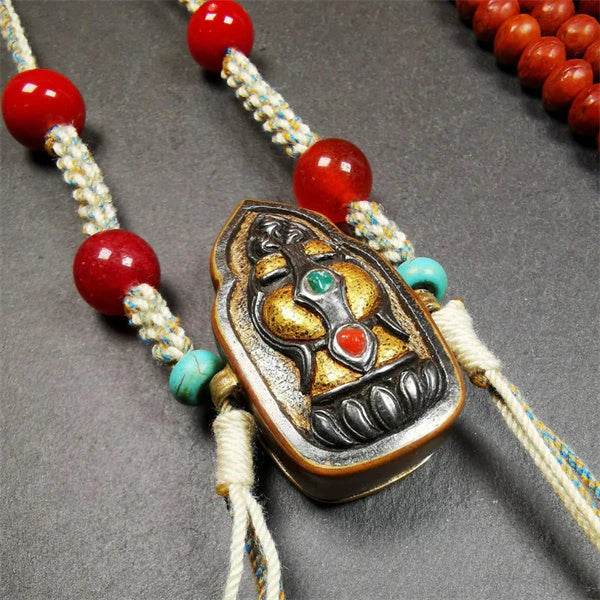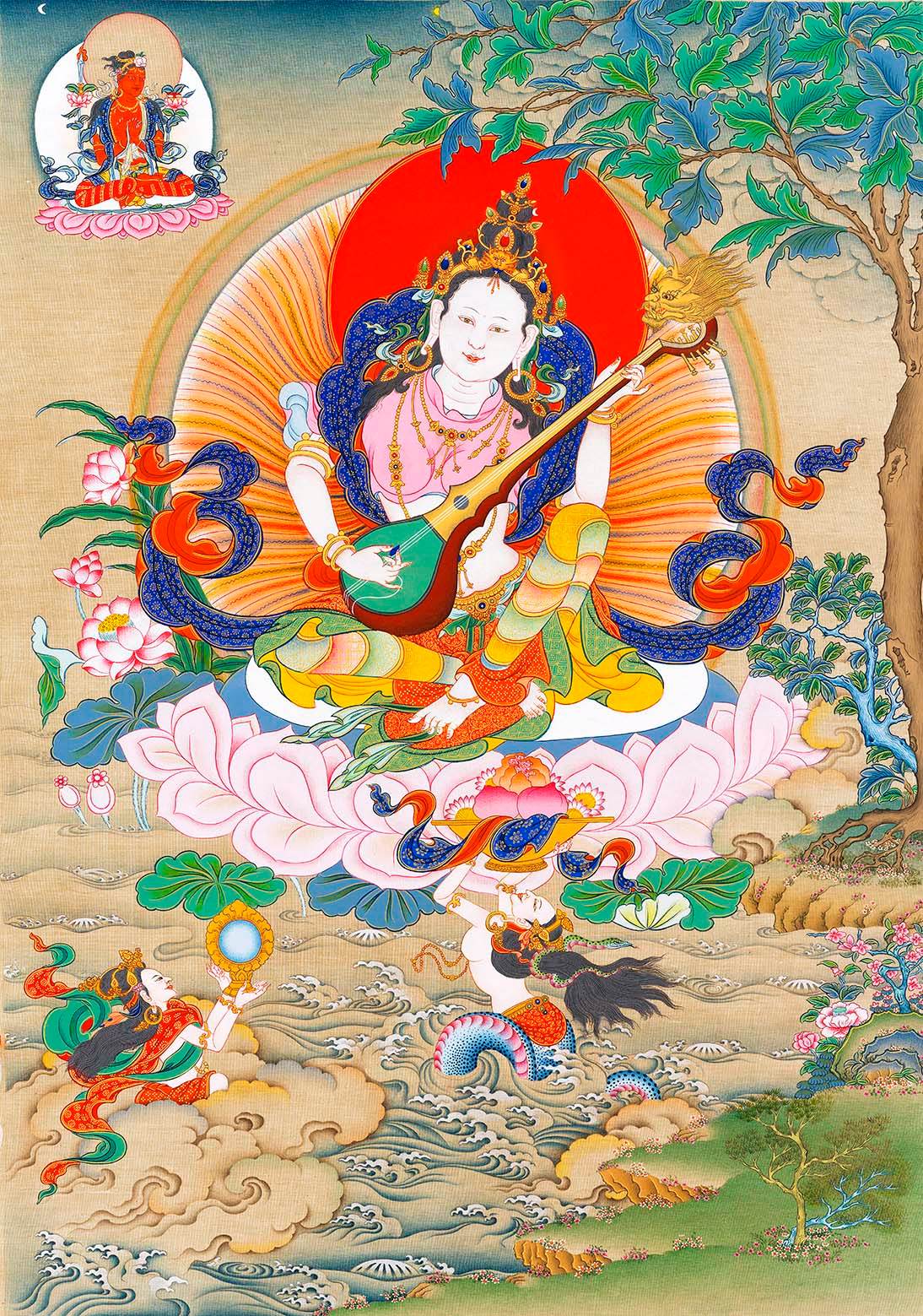
"British Tibet Expert" ▎Street Life in Lhasa in the 1920s

View of Potala Palace from the Camp

Side view of the Potala Palace

Stone Stele in Front of the Jokhang Temple

Sera Monastery in Summer

Ganden Monastery

Chakpori Hill, Lhasa

White Stupa, Lhasa

Yak Hide Boat

At Norbulingka, a man with a young blue sheep

Lhasa Meat and Vegetable Market

Food Stalls in Lhasa

Lhasa Bookstall: Two Booksellers Sitting on the Ground, Crowd Gathered Around

Silversmiths of Lhasa

Tibetan Cobbler Making Boots in Lhasa

Wife of a Wealthy Gyantse Merchant Wearing Jewelry

Man Performing the Tongue Gesture

Monk Seated in a Hermitage on the Gyantse Plain

Khampa Muleteer

Three Women Picnicking in a Park in Lhasa

Kusho Doring and His Wife
Learning Tibetan
Charles Bell
Born on October 31, 1870, in Calcutta
His father was a civil servant, and he was one of six children
Educated at Oxford University, Winchester School, and
New College, Oxford
In 1891, he became a civil servant
And served for nine years in Bengal, Bihar, and Orissa
During this time, he contracted malaria
Leading to his transfer to Darjeeling in 1900
Malaria remained his greatest health challenge for the rest of his life

Charles Bell
In Darjeeling,
He first encountered Himalayan culture
And became deeply fascinated by it
Immediately began learning Tibetan
In 1905, Bell published
His first book, *Manual of Colloquial Tibetan*
The book consisted of two parts: grammar and a dictionary

Rock Carved with "Om Mani Padme Hum"
Beyond Tibetan studies,
Bell had a strong interest in photography.
During his time in Tibet,
He took many photos of Tibetan daily life,
Which greatly aided the study of Tibetan culture.

Picnic Party Near Lhasa. Playing a Dice Game
In the foreground is a shoden (dice mat)
Surrounded by shells used for counting.
Tibet Expert
In the following years,
Bell became increasingly involved in Tibetan
and surrounding regional affairs.
From 1904 to 1905,
He was responsible for administering the Chumbi Valley.

Chumbi Valley
Before 1908,
Bell also served as Trade Agent for Sikkim, Bhutan,
and Lhasa, Tibet, China.
Locally known as the "Tibet Expert."

Lepcha was Sir Charles Bell's attendant for 18 years and held a special responsibility for him. Bell noted: "Lepcha has learned to some extent from me how to use a camera—many of the photos in Lhasa were taken by him."
In 1918,
Bell retired due to health reasons
And stayed in the Darjeeling region for two years,
Dedicated to Tibetan studies.

At Dochün, 15,000 feet, Bell wore a fur hat, silk face mask, extra-thick waterproof Tibetan felt gloves lined with wool, riding breeches, Gilgit boots, and snow goggles.
Entering Lhasa
In 1920,
London dispatched Bell as a special envoy to Lhasa.
He was the first British diplomatic representative to set foot in Lhasa,
Though a few Italian missionaries had entered over two centuries earlier.
Bell remained in Lhasa for nearly a year.

Banknotes of the time
He arrived in Lhasa on November 17th.
The 13th Dalai Lama informally received Bell,
Sitting with him at a small table in a private room—
No attendants present, in a warmly personal manner.

Butter cheese, dried apricots, and dried apples gifted to Bell by His Holiness,
Wrapped in colorful cotton cloth and sealed with a red circular stamp.
The people of Lhasa considered it a singular honor,
For His Holiness customarily received visitors only upon his throne—
Without exception, even for the highest officials.

Bell's Room at Reting Monastery, 1921:
"We were lodged in the Hutuktu’s quarters—clean, bright, and well-furnished, with chintz curtains and white felt carpets. In my bedroom stood a large cabinet, painted red and gold, containing fourteen gilded statues arranged on two tiers."
Upon returning in 1921,
He formally resigned from the civil service
And devoted himself exclusively to Tibetan cultural studies,
Publishing several books on Tibetan history and culture:
Tibet: Past & Present (1920),
The People of Tibet (1928), among others.

The People of Tibet
In 1934, Bell returned to Tibet once more,
This time accompanied by his wife, Cassie.
Sadly, he could not reunite with his old friend—
His Holiness had passed away in December 1933.
In the following years,
Bell continued traveling across Central Asia,
Visiting Mongolia, Manchuria, Siberia, and beyond.

A centuries-old Buddha statue, 30 feet tall, carved from the rock of the Kyichu Valley; the vertical streaks in the image are caused by dripping water from above. The man seated at the entrance demonstrates the statue's scale.
Bell’s final work was Portrait of the Dalai Lama,
A biography written for his close friend,
Published posthumously in 1946.
He completed the manuscript days before his death.
Bell passed away on March 8, 1945, in Canada,
And was buried at Memorial Garden in Oakridge, Vancouver Island.

Sky Burial
Tibetanized
Sir Charles Bell was one of the most influential British officers in Tibet.
His 1920 journey to Lhasa paved the way for subsequent British officials to enter Tibet.
Immersed in Tibetan culture and language,
He stated: "I have become largely Tibetanized."
This earned him deep respect among many Tibetans.

House of Patrula near Shigatse
As a Tibetan official once remarked:
"When a European stays with us,
I feel he is European,
And we are Tibetans.
But when Bell stays with us,
I feel we are all Tibetans."

Man and Wife Traveling in the Chumbi Valley

Golok Man and His Wife

Horpa Man and Woman

Lhasa Attire of a Lay Official's Wife
“when Bell stays with us,
I feel we are all Tibetans.”

Charles Bell (center)
In 1900, Bell was sent to Darjeeling to begin studying Tibetan; in 1920, he led a diplomatic mission to Lhasa, staying for a year and documenting Tibetan life through extensive photography. He left civil service in 1921 to focus on researching and writing about Tibet; in 1922, he was knighted. His published works on Tibetan culture and history include: Tibet: Past & Present (1920), The People of Tibet (1928), among others.







1 comentario
uskcbk